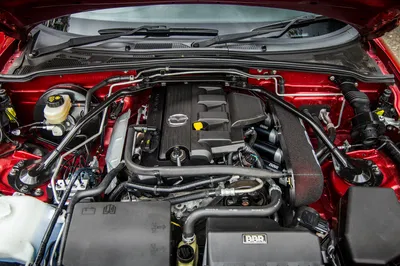What Are Individual Throttle Bodies And Why Might You Want Them?

When it comes to tuning a naturally aspirated engine, individual throttle bodies (commonly known as ITBs) may just be the ultimate upgrade. Each cylinder gets its own throttle valve, with the effect of increased power and a better response from the engine. Plus, they look and sound incredible too.
Are they really worth it, though? We explain.
What are individual throttle bodies?

To answer this, we’re best off looking at a more conventional setup first. Normally, air comes in through some ducting, passing through a filter and entering an inlet manifold that operates a partial vacuum via a single throttle body. From here, the air is sucked into the inlet ports for each cylinder via a series of channels. The air is mixed with fuel, and a spark ignites the fire, and hey presto, internal combustion occurs.
Individual throttle bodies, as the name partly implies, involve using a throttle body for each cylinder, all linked by one throttle cable. Where an airbox is used, it contains atmospheric pressure rather than a vacuum. Instead, a vacuum line runs from a vacuum box/chamber it each of the intake runners right near the throttle bodies.
What are the benefits of individual throttle bodies?
With the conventional setup described above, the air has much further to travel from the single throttle body to the inlet ports. Plus, this distance varies for each cylinder. With the ITB setup, there’s a more direct and identical path for air to reach the inlet ports.
This makes for a much sharper throttle response, and thanks to the more efficient way in which air is being fed to the combustion chambers, an increase in power. Plus, it’s possible to ditch the airbox entirely, since all it’s holding is atmospheric air. Some setups feature a simple foam filter covering intake runners, while others leave them completely exposed.
Those are the facts, but there are some more subjective improvements too. The first is looks - whether they’re left open to the elements or not, there’s something purposeful and racey about a set of ITBs nestling under your bonnet. The second is noise - that more direct, consistent path for intake air often makes for a throatier engine note. This is perhaps most effective on inline-four engines, turning what was a relatively ordinary four-pot induction noise into something all brawny and angry.
What are the disadvantages?

If ITBs are so good, you might be thinking, why aren’t they on all cars? Primarily, it’s cost. Having four, five, six, eight, 10 or 12 throttle bodies as opposed to one adds a lot of moving parts and complexity before you’ve even thought about plumbing in a vacuum line.
Are aftermarket ITBs worth it?

The money issue is present for anyone mulling over an aftermarket ITB setup too. Gains will vary wildly from car to car, but as a general rule, this is an expensive way to add power if we’re considering pounds/dollars per brake horsepower.
The kit for BBR GTI NC Mazda MX-5 ITBs we tried out a few years ago will cost you £2274 today for example and on their own add around 20bhp. By comparison, a BBR stage one supercharger kit for the same car will cost you about twice that but for a gain of around 90hp.
You need to be sold on the noise and the looks, and/or be determined to increase power without the use of forced induction before considering a setup like this.
Do any production cars have individual throttle bodies?

Being a costlier setup to mass produce, individual throttle bodies are something you’ll often see on more exotic performance cars. Ferrari, for instance, used them on the F40, F50 and F355, among many others further back in the Italian firm’s history. That’s not to say ITBs have never made it onto more attainable stuff, however.
BMW‘s M Division has a long history of sticking ITBs on its naturally-aspirated engines, with the S38, S52 and S54 inline-sixes, the S65 V8 and the S85 V10 among those receiving the ITB treatment. A particularly odd case is the SR20DETT found in the Pulsar GTI-R - it has individual throttle bodies, despite Nissan only giving the turbocharged inline-four a single throttle setup in the famed S-chassis models.















Comments
No comments found.